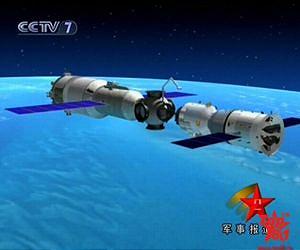China’s Space Station Set To Be Completed By 2023
This article is more than 2 years old

China has already announced plans to land a probe on the moon this year. Now, according to the International Astronautical Congress, in the next decade China will complete a space station able to accommodate up to six astronauts for short-term missions or three astronauts for long-term missions.
The 64th Congress held in Beijing was the perfect opportunity for China to release details about the station. It will include three capsules, as well as a cargo and supply transport shuttle. The core of the station will consist of a 18-meter-long module weighing about 20 metric tons, and the station will have two laboratories in which astronauts can conduct tests and experiments. The astronauts will have about 60 square meters of room in the station, which provides a relatively large amount of space for them.
According to China’s first female astronaut, Liu Yang, China will consider sending foreign astronauts on missions to the station. China has not participated in the building or staffing of the International Space Station, so such a move could represent a step toward collaboration. Maybe.
China will focus on research, design, and development of the new station over the next decade. Part of the preparation will be a space laboratory, Tiangong-2, which China hopes to launch in about two years. Tiangong-2 will lead to the 2018 launching of a core module of the proposed space station, which would help guide and further develop China Aerospace Science and Technology Corp’s plans for the manned space station.

The Tiangong program began with the 2011 launch of the Tiangong-1 space station. After its launch, Tiangong-1 received the Shenzhou 8, an unmanned craft that successfully docked with the station. Then, in 2012, the Shenzhou 9, carrying three astronauts, including Liu Yang on her first spaceflight, docked with the station. Shenzhou 10, China’s fifth manned mission, launched in June of this year, successfully docked with the station, and its crew conducted experiments while at the station. A few weeks later, Shenzhou came back to Earth, thus concluding this initial phase of the Tiangong program.
In 2003, China became the third country to send a human into space, and has now officially entered the “space race.” The interesting part will be what happens next. The USSR’s success in launching Sputnik in 1957 and in putting the first man in space in 1961 catalyzed Kennedy’s space goals — he didn’t like being behind, especially given his rocky relationship with Nikita Khrushchev. It’s unlikely that America would have made putting a man on the moon a national priority if the USSR hadn’t established itself as the dominant space-faring country. But Kennedy’s 1962 proposal to put a man on the moon in order to beat the USSR seems to reflect a mindset that has generally shifted over time. Given the US/Russia collaboration on ISS, as well as American astronauts buying seats on Russian space capsules, the space race is no longer America v. Russia. The question now is whether the space race is back on due to China’s plans, and whether that will prompt the U.S. and/or Russia to step up its game.

One interesting observation is that China’s 2023 goal nearly coincides with the anticipated timing of the U.S. launching a manned mission to an asteroid (President Obama has stated 2025 as the target year for that), as well as possible manned missions to Mars (2030, according to Obama).
I wonder if by the mid-to-late 2020s, the race will be on to put colonists on the red planet, and what a little friendly (I hope) competition does to bring these plans to fruition. It could be like Lost in space — who will be the new crew and who will be the others? And what’s in the hatch?!












